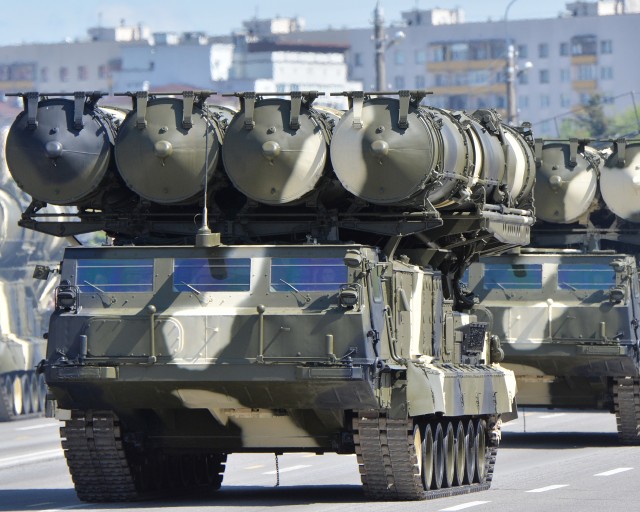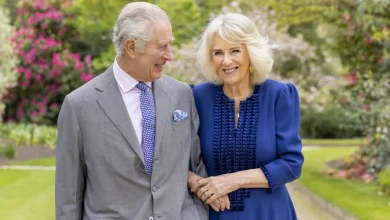
Photo: Handout/RIA Novosti/Getty Images
A joint missile Russian-Armenian air defense system will put the brakes on Azerbaijan’s goal of retaking Nagorno-Karabakh and seven adjacent territories, Stratfor said as it analyzed the motives behind the Russian-Armenian air defense deal. Excerpts from the analysis are provided below.
On Nov. 11, Russian President Vladimir Putin instructed his government to sign an agreement with Armenia to create a joint missile air defense system in the region. Not long after, the Armenian government confirmed that Russian Prime Minister Dmitri Medvedev is expected to visit Armenia in late November to officially sign the air defense system deal.
The move, though reminiscent of Moscow’s actions in Central Asia and Belarus in previous years, comes at a time when Russia is being forced to respond to a wider array of challenges than ever before. Threats are rising from the Near East, while the West is ramping up its military activities in Georgia and Nagorno-Karabakh moves closer to changing its political status.
And as Russia increases its military presence in Armenia, its competition with major regional powers for influence in the South Caucasus will intensify, adding to the growing list of issues Russia must contend with outside its borders.
An expanding military presence will put Russia in direct competition with Turkey’s ambitions in the South Caucasus and Georgia’s cooperation with NATO and U.S. forces. It will also put the brakes on Azerbaijan’s goal of retaking Nagorno-Karabakh and seven adjacent territories.
For Armenia’s part, the joint air defense deal comes at an opportune time. Its government has received mounting criticism from Armenian politicians and media amid a growing belief that the country’s membership in the Russian-led Collective Security Treaty Organization and its reliance on Russia as a security guarantor have yielded few results, particularly as Azerbaijan pursues a more assertive military posture around Nagorno-Karabakh.
Under the new agreement, Armenian air defenses will be strengthened, and the country will likely see new air defense equipment, radios, radar systems and combat helicopters deployed to its territory. Armenian Minister of Territorial Administration and Emergency Situations Armen Yeritsyan also recently announced that the Stepanavan Airport, located a mere 20 kilometers (about 12 miles) from the Armenia-Georgia border, will host Russian Mi-24 and KA-32 heavy helicopters starting in 2016. While these aircraft do not amount to a projection of Russian force because of their limited range, they do reflect the Kremlin’s broader policy of boosting its air capabilities in Armenia — a process that dates back to January 2014, when Russia announced that it would strengthen Armenia’s Erebuni Airport with Mi-24P, Mi-8MT and Mi-8SMV helicopters. Along a similar vein, Nagorno-Karabakh’s president has said Russian forces may use his region’s Stepanakert Airport for air operations, an offer that may be in response to the recent uptick in air cooperation between Armenia and Russia.
Russia’s growing military presence in the South Caucasus will be especially worrisome to Turkey and Azerbaijan, Armenia’s longtime rivals in the region. The two countries have ramped up their joint military exercises with Georgia over the past year, posing a heightened threat to Armenia, whose strategic position is already weak. Since Turkey already had less ability than Russia to project power into the South Caucasus, the Kremlin’s recent moves will only increase the gap between Russian and Turkish influence there, thus intensifying their competition for sway in the wider region.
Meanwhile, Russia’s stronger aerial presence in Armenia could alter the military balance of power between Armenia and Azerbaijan. Azerbaijani politicians have already voiced concerns about the air defense agreement, and on Nov. 11 — the same day Putin gave his orders to sign the deal — Azerbaijani President Ilham Aliyev visited his country’s S-300 anti-aircraft missile brigade, the unit responsible for Azerbaijan’s aerial defenses.
The timing of the deal is significant for a number of reasons. First, it signals Russia’s response to recent developments in the ongoing standoff between Armenia and Azerbaijan over Nagorno-Karabakh. As talks progress on Armenia handing over to Azerbaijan several regions adjacent to the breakaway territory, Russia will boost its military presence in the South Caucasus to ensure the security of Armenia and Nagorno-Karabakh and to make any further territorial concessions more politically palatable to Yerevan. Second, as Russia becomes more involved in the Syrian conflict, Moscow is keen to increase its ability to monitor its southern borders — a goal that a military presence in Armenia, with its proximity to the Middle East, is ideally suited to achieve.








